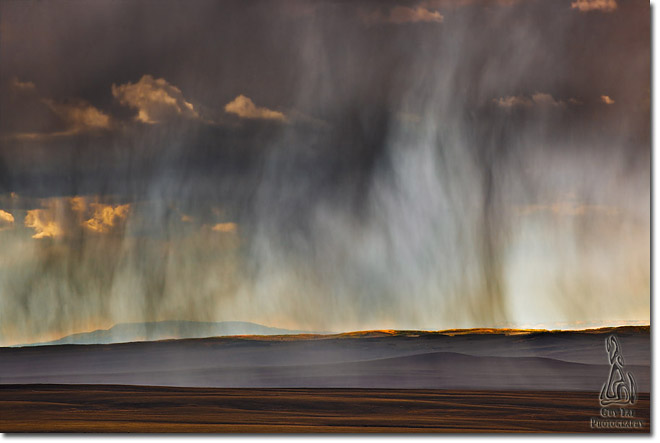The Essential Landscape: Rethinking Visualization |
In my book Creative Landscape Photography, I introduce a framework for creative image-making relying on six phases. The premise is that all images begin with a concept: a nebulous, amorphous "trigger" that sets the creative process in motion. The concept may be a thought, an emotion, a response, or a sensation that the artist experiences and wishes to express in the finished work. Once experienced, the artist's task is to transform the shapeless, abstract concept into a visible image through the steps of Visualization, Composition, Capture, Processing, and Presentation.
The concept has no lines or colors or other physical characteristics. It is the thing instinctively recognized by the artist, commanding their attention and suggesting ulterior meaning - an intuitive sense that there's something here worthy of further exploration. Visualization is the process of overlaying the concept with literal characteristics. By the time composition is considered, the concept already possesses visual properties (lines, shapes, colors) to be arranged within the frame, later to be captured by the camera and turned into a tangible artifact: a print or digital file. Hence the ultimate importance of visualization: it is the linchpin that ties together the intangible idea with its literal representation - the point in time where an instinctive response becomes a vision, ultimately to be expressed in a physical, shareable artifact: the finished work.

Think of the artist as having the job of bridging two worlds: one of feelings, notions, meanings, and abstractions available only to them; and one of literal objects perceptible by physiological senses that can be shared with others. Visualization is the point of translation, where a work of art assumes shape and crosses from one world into the other, to assume an independent existence in it.
Visualization, defined as the ability to see in the "mind's eye" the finished work before making and applying technical decisions, is also the point in the creative process where images transition from the realm of the reactive and contemplative to that of the conscious and deliberate. Simply speaking, there is no way to make the transformation from thought to object without craftsmanship and skilled application of the artist's tools.
Understanding visualization also serves to illustrate the role of tools and equipment in the creative process. Simply put: instinct, awareness, and imagination create the concept; visualization transforms it into an image; equipment makes the image tangible.
Comments on NPN nature photography articles? Send them to the editor. NPN members may also log in and leave their comments below.
 Guy Tal is a professional photographer and author residing in the state of Utah, in the heart of a unique and scenic desert region known as the Colorado Plateau. Guy teaches and writes about the artistic and creative aspects of photography and guides private workshops and individuals seeking the beauty and solitude of the canyon country. More of his works and writings can be found on his web site and blog at guytal.com. You may also follow Guy on Facebook or Twitter.
Guy Tal is a professional photographer and author residing in the state of Utah, in the heart of a unique and scenic desert region known as the Colorado Plateau. Guy teaches and writes about the artistic and creative aspects of photography and guides private workshops and individuals seeking the beauty and solitude of the canyon country. More of his works and writings can be found on his web site and blog at guytal.com. You may also follow Guy on Facebook or Twitter.